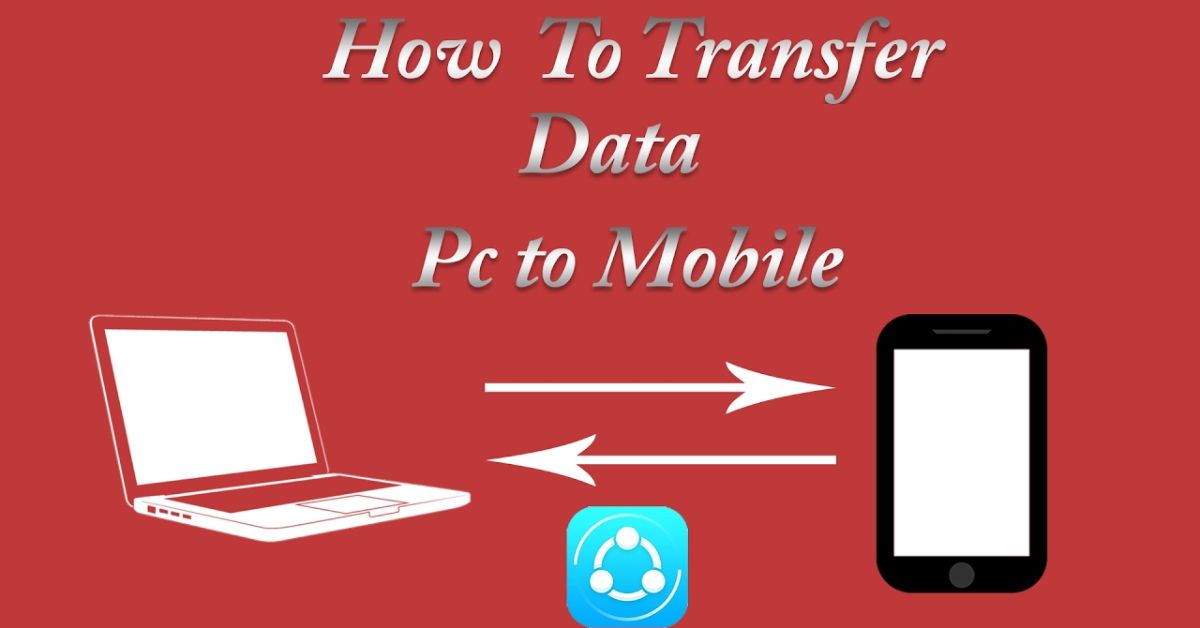In 2025, our smartphones carry almost everything—photos, documents, videos, and personal data that define our digital life. But what happens when your phone storage runs out or your device suddenly stops working? That’s when knowing how to transfer all data from mobile to PC (complete guide 2025) becomes a must. Moving files from mobile to your computer not only saves storage space but also acts as a safety net for your memories and important files. Whether you’re switching devices, creating a backup, or simply organizing your data, this guide walks you through every reliable method available today—from USB to wireless and cloud options—with expert tips to keep your transfer safe and efficient.
Why You Should Transfer Data from Mobile to PC
Transferring data from your mobile to your PC is more than just freeing up space—it’s about security, privacy, and convenience. Understanding how to transfer all data from mobile to PC helps protect your important files from loss or damage caused by phone crashes, theft, or corruption. By creating a local backup on your computer, you make sure your personal photos, videos, and documents remain safe even if your phone fails unexpectedly. Another major benefit is accessibility. Files stored on your PC are easier to organize, edit, and share whenever you need them. You can create folders, rename files, and manage large items that would otherwise slow down your mobile device. Most importantly, transferring data directly to your PC gives you complete control and privacy, unlike cloud services that rely on external servers and internet connections.
Let’s look at a quick comparison between local PC storage and cloud storage.
| Feature | PC Storage | Cloud Storage |
| Speed | Faster (depends on USB or Wi-Fi connection) | Slower due to upload/download process |
| Privacy | 100% under user control | Relies on third-party servers |
| Cost | One-time investment | Monthly or yearly subscription |
| Access | Offline access anytime | Requires internet connection |
A small real-life case illustrates this perfectly. When a user named Lisa from California lost her iPhone in 2024, she was relieved that she had already transferred all her family photos and work files to her laptop. Her experience is a reminder that a quick transfer today can prevent a huge loss tomorrow.
Different Ways to Transfer Data from Mobile to PC
There are several practical ways to move your data safely and quickly in 2025. Depending on your preference, you can use a USB cable, wireless connection, or cloud storage. Some prefer wired transfer because it’s faster and doesn’t depend on Wi-Fi. Others like the convenience of wireless and cloud options that eliminate cables altogether.
| Transfer Method | Speed | Ease of Use | Compatibility | Best For |
| USB Cable | Very Fast | Easy | Android & iPhone | Large Files |
| Wi-Fi Transfer | Moderate | Moderate | Cross-platform | Quick Sharing |
| Bluetooth | Slow | Simple | All Devices | Small Files |
| Cloud Storage | Depends on internet | Easy | Google, Apple, Microsoft | Continuous Backup |
| File Transfer Apps | Moderate | User-friendly | Android, Windows, macOS | Multi-device use |
Each method has its pros and cons, and the best choice depends on your needs. In the sections below, we’ll cover every method in detail, step by step.
How to Transfer Data via USB Cable (Step-by-Step Guide)
Step-by-Step Instructions for Android and iPhone Users
The traditional USB cable method remains the most reliable and fastest way to transfer data from mobile to PC. For Android users, all you need is your phone’s original USB cable. Connect your device to your computer, and you’ll see a notification asking you to select the connection type. Choose “File Transfer (MTP)” instead of “Charge Only.” Once selected, your phone’s internal storage will appear on your PC like a flash drive. From there, you can simply drag and drop files, photos, videos, or documents into your desired folders.
For iPhone users, the process is slightly different. You can use iTunes or Finder (on macOS) to import photos and videos. After connecting your iPhone with a Lightning or USB-C cable, open iTunes and click on your device icon. Under the “File Sharing” section, you’ll find your data organized by app. You can copy everything you need to your computer in just a few clicks.
| Cable Type | Average Transfer Speed | Device Compatibility |
| USB 2.0 | 480 Mbps | Older Android and Windows PCs |
| USB 3.0 | Up to 5 Gbps | Modern Windows and macOS devices |
| USB-C | Up to 10 Gbps | Latest Android phones and iPhones |
If your PC doesn’t detect your phone, make sure your drivers are updated or try a different port. Always use the original cable for better connectivity.
How to Transfer Data Wirelessly (Wi-Fi and Bluetooth Methods)
Wireless File Transfer Setup and Tools
Wireless transfer methods are becoming increasingly popular in 2025, especially with faster Wi-Fi 6 and 6E networks. For users searching how to transfer all data from mobile to PC without cables, modern apps like Snapdrop, AirDroid, and Feem make the process effortless. For example, with Snapdrop, you simply open the app on your phone and your PC browser, allowing both devices to detect each other instantly on the same Wi-Fi network. This enables you to share photos, videos, and documents at impressive speeds without any cords. Bluetooth also remains a reliable method for smaller files like contact lists or text documents. Just enable Bluetooth on both devices, pair them, and send files directly. While it’s slower than Wi-Fi, it’s still a convenient option when no internet connection is available. According to a 2025 Statista report, over 62% of U.S. smartphone users now rely on wireless file transfer apps at least once a week because of their speed, simplicity, and reliability—proving that the shift from wired connections to wireless methods is stronger than ever.
Using Cloud Storage for Data Transfer (Google Drive, iCloud, OneDrive)
Uploading and Downloading Files from the Cloud
In today’s cloud-connected world, using cloud storage for data transfer (Google Drive, iCloud, OneDrive) is one of the most flexible options. You can upload your files to the cloud from your mobile and then access or download them on your PC anytime. For Android users, Google Drive offers seamless syncing through your Gmail account. Simply select the files, tap “Upload,” and your data will be ready to access from drive.google.com on your computer.
iPhone users can rely on iCloud, which automatically backs up photos, videos, and documents. Accessing your data from icloud.com or through the iCloud desktop app is quick and convenient. Microsoft’s OneDrive is another great option, especially for Windows users, since it integrates directly with File Explorer.
| Cloud Service | Free Storage Limit | Paid Plans | Best Feature |
| Google Drive | 15 GB | From $1.99/month | Integration with Android |
| iCloud | 5 GB | From $0.99/month | Best for iOS users |
| OneDrive | 5 GB | From $1.99/month | Built-in Windows access |
However, remember to always enable two-factor authentication (2FA) and use strong passwords to keep your data safe. It’s also a good idea to combine both local and cloud backups for maximum protection. As cybersecurity expert Mark Ellison once said, “One backup is good; two are smart.”
Tips to Ensure Safe and Fast Data Transfer
When transferring files between devices, safety and speed should always be top priorities. Use fast USB 3.0 or USB-C ports to reduce waiting time. Close unnecessary apps on both your mobile and PC before starting a large transfer to avoid interruptions. For wireless transfers, ensure both devices are on the same Wi-Fi network with a strong signal.
Another crucial tip is to scan all transferred files for malware using antivirus software, especially when connecting public or shared devices. Organize your files in labeled folders, sorted by date or category, so you can find them easily later. Some people use tools like SyncThing or Google Backup & Sync to automate regular transfers, saving time and preventing human error.
Here’s a quick summary checklist for efficient data transfer:
| Checklist | Purpose |
| Use original USB cables | Prevent connection issues |
| Keep Wi-Fi stable | Avoid file corruption |
| Scan for viruses | Ensure data safety |
| Organize folders | Faster data management |
| Use dual backups | Better long-term security |
By following these tips, you ensure that every transfer runs smoothly and safely, no matter which method you use.
May Also Read: How to Hide App in iPhone (2025 Guide for Privacy & Clean Home Screen)
Conclusion
Transferring your mobile data to a PC in 2025 isn’t just a technical task—it’s a vital step toward maintaining digital security. Understanding how to transfer all data from mobile to PC ensures your files stay organized, accessible, and protected from unexpected loss. Whether you use a USB cable for speed, wireless transfer for flexibility, or cloud storage for remote access, each method has its own unique benefit in safeguarding your personal data. Remember, prevention is always better than recovery. Don’t wait until your phone crashes or gets stolen—take a few minutes today to back up your files and secure your digital world. As technology continues to evolve, mastering the process of transferring data between devices remains one of the smartest ways to stay in control of your information.


